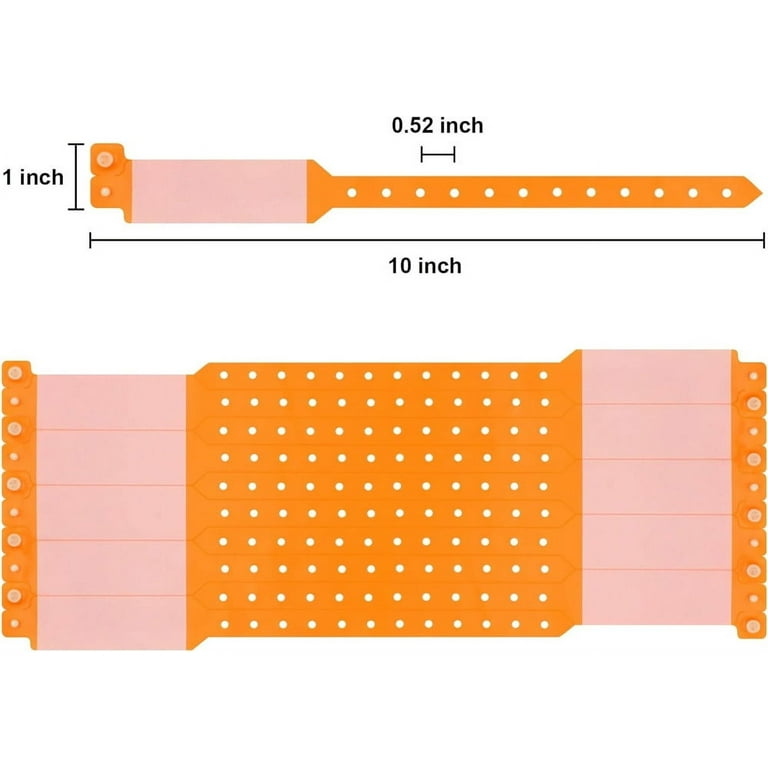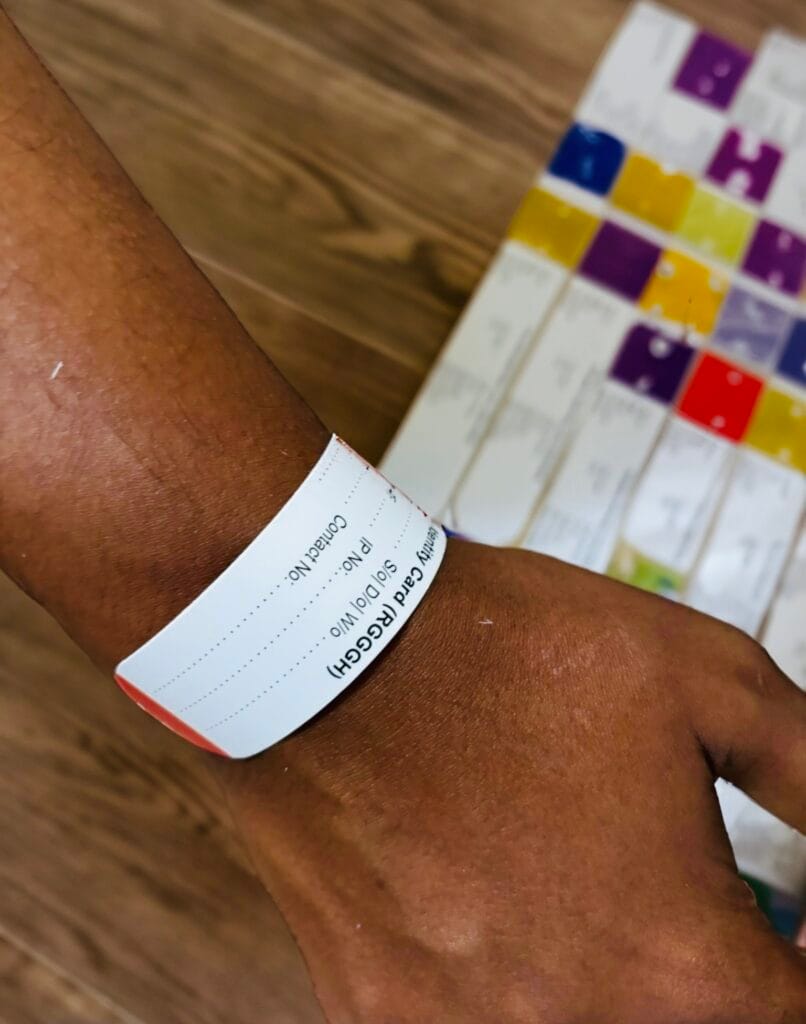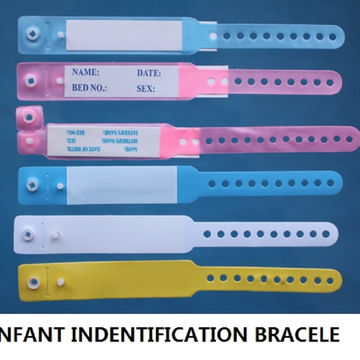Exactly How Patient Identification Band Aids Prevent Medical Errors and Mistakes
Exactly How Patient Identification Band Aids Prevent Medical Errors and Mistakes
Blog Article
Why Individual Identification Bands Are Important for every single Healthcare Center
In the complex landscape of health care, person identification bands work as a foundational element in safeguarding individual safety and minimizing clinical errors. These bands supply vital information that not only promotes exact recognition but also improves communication amongst doctor. As organizations aim to meet governing compliance and enhance overall workflow effectiveness, the function of recognition bands ends up being progressively substantial. The implications of their usage prolong past mere compliance-- what are the possible consequences of ignoring this essential practice? Discovering this concern discloses a deeper understanding of patient security and top quality treatment.
Stopping Medical Errors
In the world of healthcare, avoiding clinical mistakes is critical to guaranteeing person security and high quality of care. One of the most important variables in mitigating such errors is the precise recognition of people. Misidentification can lead to unsuitable therapies, medicine errors, and even surgical errors, every one of which can have devastating consequences for patients and health care carriers alike.
Patient recognition bands offer as an essential device in this preventive approach. These bands usually include vital details, such as the client's name, date of birth, and one-of-a-kind recognition number, enabling healthcare experts to verify the patient's identification promptly and accurately before carrying out any type of care. Making sure that these bands are correctly used and continually made use of across all medical care settings is crucial.
Furthermore, the execution of electronic health and wellness records (EHR) can improve the effectiveness of client identification bands by integrating them with electronic systems that flag possible discrepancies. Routine training and adherence to methods regarding the usage of person identification bands can substantially decrease the likelihood of mistakes. In summary, durable client identification practices are vital for securing and reducing clinical errors patient welfare within healthcare settings.
Enhancing Client Safety
Patient security is a multifaceted idea that encompasses various techniques and techniques developed to protect people from harm throughout their health care experience. One important part in boosting individual safety is the implementation of patient identification bands. These bands act as a crucial device for guaranteeing that health care suppliers can properly determine clients, hence decreasing the risk of misidentification.
The presence of individual identification bands substantially decreases the possibilities of administering inaccurate medicines, performing unexpected treatments, or stopping working to identify allergic reactions. By affixing an one-of-a-kind identifier per client, healthcare facilities produce a reliable system that fosters responsibility and caution among clinical staff. This proactive method not just improves the security of patients yet likewise imparts a feeling of rely on the healthcare system.
Moreover, patient recognition bands add to a standard procedure that can be quickly incorporated right into digital health records. Patient Identification Band. This integration guarantees that essential client details is readily obtainable, further strengthening safety steps. Inevitably, the reliable use identification bands is an essential method that underpins a culture of security, aiming to safeguard individuals and enhance overall medical care end results
Improving Communication
Efficient communication is vital in the healthcare setup, as it directly influences patient security and care quality. Patient recognition bands serve as a vital tool for enhancing communication amongst doctor. By clearly presenting essential individual information such as name, day of birth, and clinical record number, these bands help with precise identification, minimizing the threat of errors in therapy and medication management.
Moreover, patient identification bands promote a culture of liability and confirmation within healthcare teams. When all personnel are equipped with prompt accessibility to reputable client identification, the possibility of miscommunication decreases dramatically. For example, throughout handoffs between shifts or interdisciplinary assessments, the existence of recognition bands guarantees that every person involved gets on the same page pertaining to client identification and medical history, therefore reducing misconceptions.
Furthermore, these bands can incorporate with digital health and wellness documents (EHR), enabling for seamless interaction of individual information throughout different platforms. This connectivity not just enhances the effectiveness of information sharing but also supports an extra coordinated method to individual care. Eventually, the adoption of patient identification bands is essential for boosting interaction, therefore contributing to much better health results and guaranteeing that clients get the highest possible standard of treatment.

Streamlining Process
The execution of person identification bands substantially contributes to simplifying process within medical care atmospheres. By supplying immediate and clear recognition of clients, these bands reduce the time medical care specialists spend validating individual details. This effectiveness reduces the possibility for mistakes, permitting personnel to concentrate on straight person care instead than administrative tasks.
With standard identification procedures, medical care teams can quickly access important patient data, including clinical background, allergies, and treatment plans. This fast accessibility enhances decision-making and permits prompt treatments, ultimately improving patient outcomes. Furthermore, the use of recognition bands assists in much better sychronisation amongst multidisciplinary groups, making certain that all members have the right information at their fingertips.

Additionally, individual identification bands can be integrated with electronic wellness record (EHR) systems, better enhancing operations. By checking a band, doctor can quickly share and upgrade information, consequently decreasing redundancy and improving paperwork efforts. This combination aids keep a continual circulation of info, which is critical in vibrant health care settings.
Ensuring Regulatory Conformity
In today's medical care landscape, making certain governing compliance is vital for preserving patient safety and security and business honesty. Individual recognition bands play a vital duty in meeting various governing standards, such as those set forth by the Joint Payment and the Centers for Medicare & Medicaid Provider (CMS) These organizations highlight the need of accurate individual recognition to reduce medical errors and boost the high quality of care.

Executing standardized person identification bands aids medical care facilities comply with laws that call for precise individual recognition at every phase of treatment. This includes medication administration, surgeries, and blood transfusions. Non-compliance can cause significant click to read more repercussions, consisting of penalties, loss of accreditation, and, most notably, endangering client safety and security.
Moreover, the use resource of innovation, such as barcoding and RFID systems incorporated with individual recognition bands, can additionally boost conformity initiatives by guaranteeing that the right patient obtains the appropriate therapy at the right time. By prioritizing the execution of durable client recognition systems, healthcare centers not just follow regulative criteria yet additionally promote a culture of security and liability, ultimately improving patient end results and rely on the medical care system.

Final Thought
In verdict, patient recognition bands offer as a fundamental element in medical care centers, substantially adding to the avoidance of clinical mistakes and the improvement of client security. By enhancing interaction among medical personnel and enhancing process, these bands help with extra reliable healthcare delivery. Furthermore, their role in making certain compliance with governing requirements can not be overstated. Ultimately, the execution of person recognition bands is essential for fostering a more secure health care environment learn this here now and improving total patient end results.
In the complex landscape of medical care, patient recognition bands serve as a foundational component in protecting person safety and security and decreasing clinical errors. These bands commonly include vital details, such as the person's name, day of birth, and unique recognition number, allowing healthcare experts to confirm the individual's identification quickly and accurately before providing any type of care.Carrying out standardized patient identification bands helps medical care facilities comply with guidelines that call for specific client recognition at every phase of care.In verdict, individual identification bands offer as an essential element in health care centers, considerably contributing to the avoidance of medical errors and the enhancement of individual safety and security - Patient Identification Band. Eventually, the implementation of patient recognition bands is crucial for cultivating a much safer health care atmosphere and improving overall person outcomes
Report this page